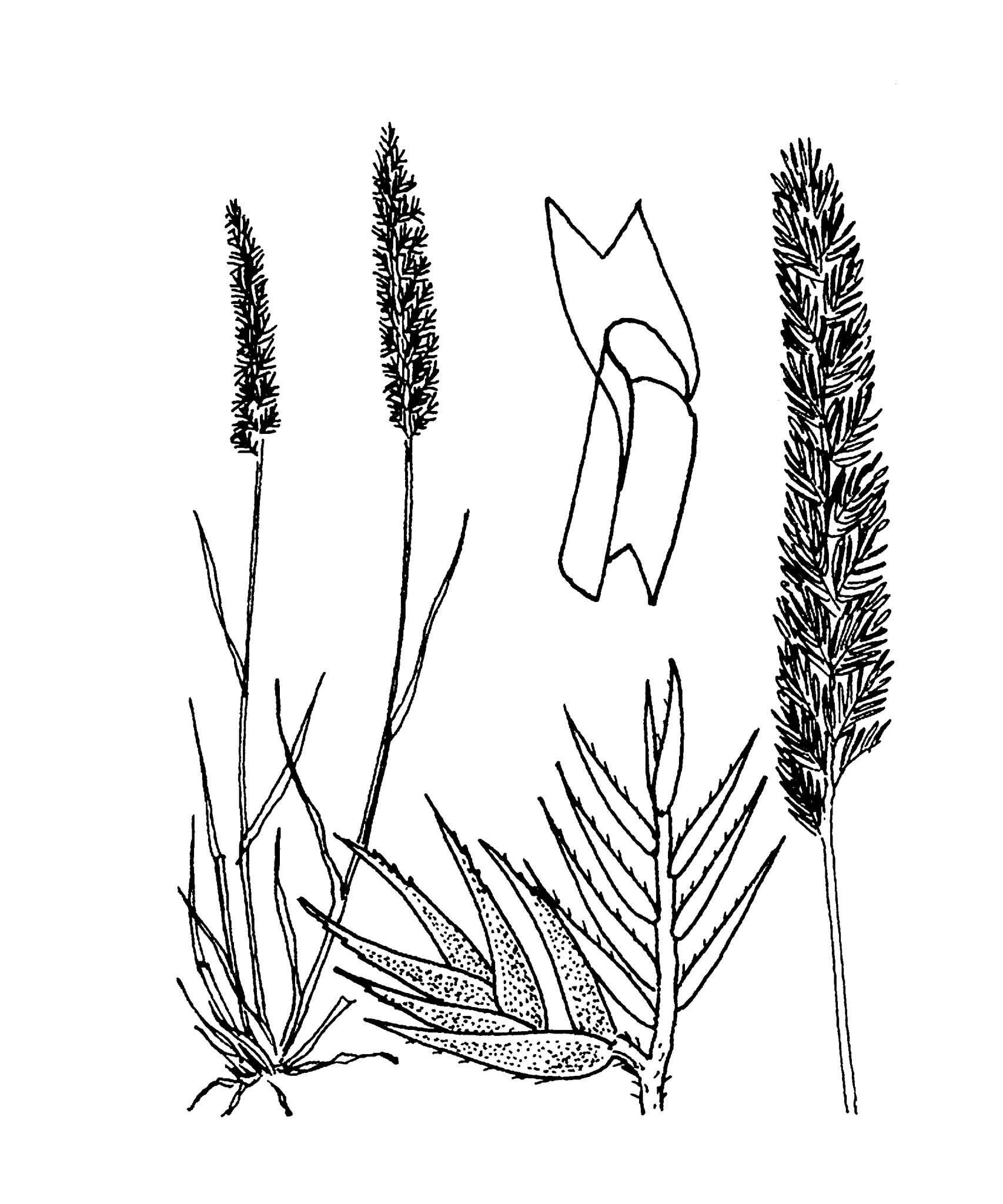
Greek kynos – dog’s tooth, oura – tail, referring to the shape of the panicle.
Annual or perennial grass. Leaves not tufted. Ligule membranous, not fringed. Leaf blade folded in bud, linear, flat. Inflorescence paniculate, spatheless. Spikelets laterally flattened, short and blunt, each fertile spikelet 1-5 flowered, subtended by a sterile spikelet of several stiff bristle-like florets. Glumes 2, lower glume 1 (-2) nerved, upper glume 1 nerved. Lemma awned, hairy or hairless, 5 nerved. Palea apically notched, membranous, 2-nerved, 2-keeled.
Found in open meadows and disturbed ground. C. cristatus, C. echinatus are weedy, the former being used as a lawn species and cultivated fodder crop.
Seed, occasionally by division of stolons.
Turf and pasture grass.
Distinctive inflorescence forming a dense, 1-sided cluster.
8 species from Europe, western Asia, North & South America.
Source: (2005). Poaceae. In: . Horticultural Flora of South-eastern Australia. Volume 5. Flowering plants. Monocotyledons. The identification of garden and cultivated plants. University of New South Wales Press.
